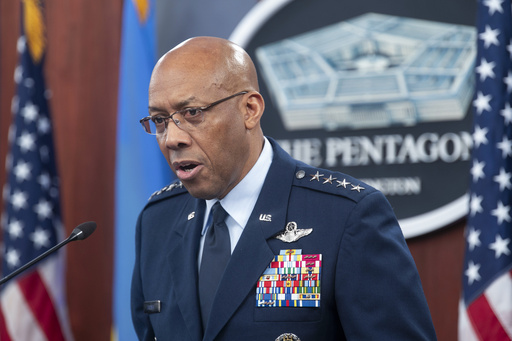
In a significant move, Gen. CQ Brown, the chairman of the Joint Chiefs of Staff, is visiting U.S. troops stationed at the southern border with Mexico on Friday. The purpose of the visit is to evaluate the military’s efforts to enhance the construction of border wall sections amid an expansion of military operations aimed at tackling illegal immigration in response to the Trump administration’s directives.
Recently, there has been a rapid deployment of military personnel and resources to the border, which includes seeking greater collaboration with Mexican security forces, implementing numerous deportation flights, and preparing detention facilities at Guantánamo Bay, potentially to accommodate up to 30,000 migrants. As of now, roughly 9,200 U.S. service members are deployed at the southern border, with 4,200 under federal orders and an additional 5,000 National Guard troops operating under state controls.
The military’s operations have seen the execution of 26 deportation flights returning migrants to their countries of origin, including various destinations like Guatemala, El Salvador, Ecuador, India, Honduras, Peru, and Panama. Additionally, 13 flights have been arranged for transporting migrants to Guantánamo Bay. Gen. Gregory Guillot from U.S. Northern Command informed lawmakers last week about the increased number of manned surveillance flights over the border aimed at tracking drug cartel movements and fentanyl trafficking, along with enhanced intelligence sharing efforts with Mexican counterparts.
Moreover, unmanned U.S. drones are also conducting surveillance over Mexican airspace, as reported by Mexican President Claudia Sheinbaum. In a recent development, President Trump classified several gangs and cartels involved in drug trafficking as foreign terrorist organizations, aiming to restrict their operations and providing law enforcement agencies additional resources to combat these groups. Guillot further indicated that Northern Command is looking to obtain broader authority from Congress to facilitate more advisory and operational cooperation with elite Mexican forces, classified as tier-one units.
Securing the southern border remains a paramount focus for the Trump administration, with the recently issued directive mandating military budget cuts exempting southern border activities from reductions. Defense Secretary Pete Hegseth emphasized the need for the U.S. to assert its own defensive capabilities, stating, “We’ve been defending other people’s borders for a long time — time to defend ours.”
In a related development, Mexico has committed to deploying 10,000 National Guard troops to strengthen border security, aiming to mitigate Trump’s threat of imposing substantial tariffs. The Pentagon announced a collaborative agreement with Mexico facilitating joint patrols on both sides of the border, enhancing information exchanges, and establishing effective communication channels between the two military forces. According to Joseph Kasper, Hegseth’s chief of staff, the agreement underlines the need to respect each nation’s sovereignty.
While exact costs for these ongoing operations haven’t been fully compiled, the deportation flights are especially expensive, averaging around $28,000 per hour. Notably, a flight to India that deported 104 Indian nationals incurred costs exceeding $2.5 million.

